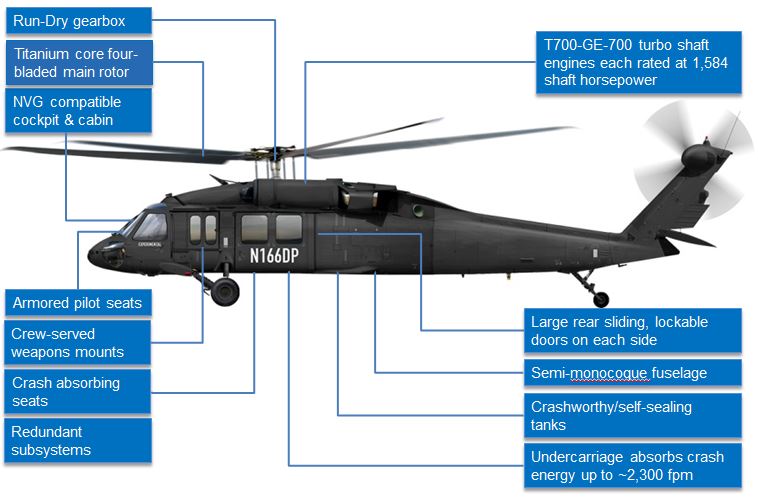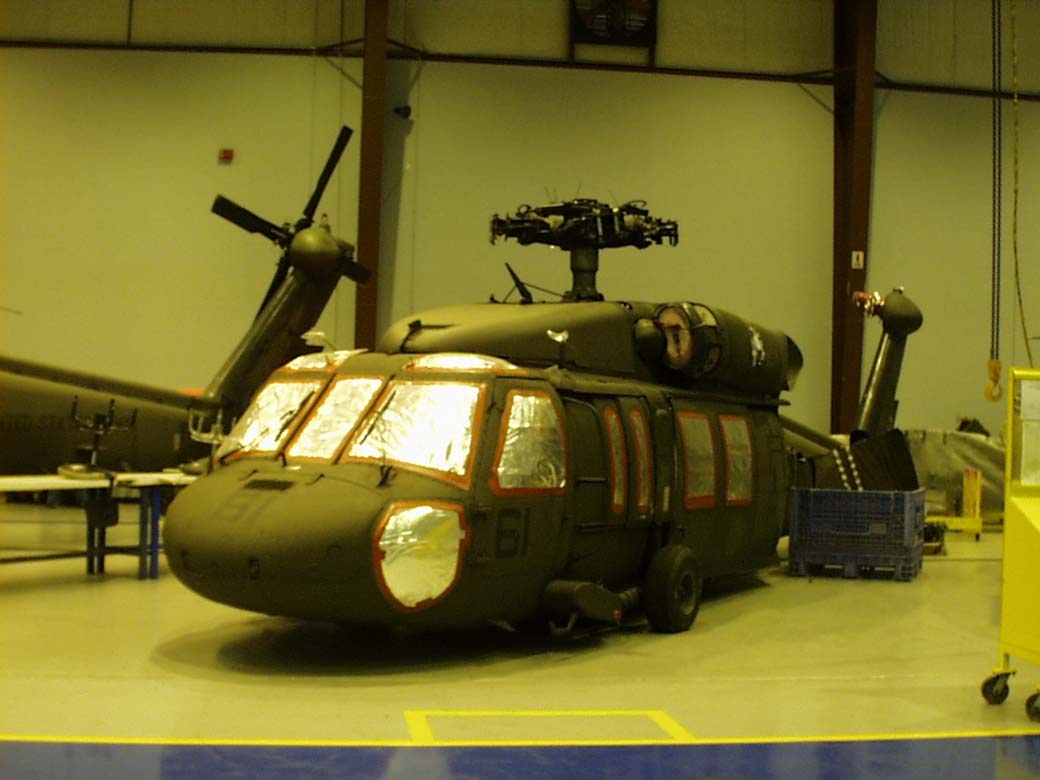The Role of the UH 60 in Combat Zones: Enhancing Mobility and Operational Efficiency
The Role of the UH 60 in Combat Zones: Enhancing Mobility and Operational Efficiency
Blog Article
Checking Out the History and Development of the UH 60 Helicopter

Origins of the UH-60
The origins of the UH-60 helicopter can be traced back to the late 1960s, a period marked by the requirement for a functional energy airplane that could adjust to the advancing needs of modern war. The united state Military acknowledged the necessity for a replacement for the older UH-1 Iroquois, which was coming to be significantly inadequate for the complexities of contemporary battle scenarios. In 1967, the Military initiated the Utility Tactical Transportation Airplane System (UTTAS) program, which looked for to establish a multi-role helicopter with the ability of different missions, including army transportation, clinical emptying, and logistical support.
The style competition attracted several aerospace makers, however it was Sikorsky Aircraft Corporation that ultimately safeguarded the agreement in 1972. The UH-60 Black Hawk was presented, showcasing ingenious design elements and advanced modern technology that established it in addition to its precursors. Its first flight occurred in 1974, and the airplane was officially adopted by the Military in 1979. The UH-60 swiftly acquired recognition for its robust efficiency, integrity, and versatility, leading the way for its extensive usage in military procedures and solidifying its status as a keystone of U.S. Army aeronautics.
Key Style Features
Cutting-edge layout attributes of the UH-60 Black Hawk dramatically add to its operational performance. Among one of the most noteworthy aspects is its twin-engine arrangement, which improves integrity and supplies a higher power-to-weight ratio, making it possible for the helicopter to do under various conditions. The airplane's four-blade main blades system supplies improved lift and ability to move, vital for tactical objectives.

In addition, the cabin is designed for optimal exposure and ergonomics, featuring sophisticated avionics that enhance pilot operations. The modular style of the UH-60 permits simple maintenance and adaptability, making it ideal for various objective accounts, from troop transport to medevac operations. These vital style features ensure that the UH-60 Black Hawk continues to be a flexible and dependable asset in army aviation, qualified of satisfying the needs of modern-day war.
Technological Improvements
Recent technological developments in the UH-60 Black Hawk have dramatically enhanced its functional abilities and adaptability. The combination of advanced avionics, such as electronic trip control systems and boosted situational understanding displays, permits pilots to operate with boosted precision and effectiveness. These systems help with enhanced navigation, interaction, and data sharing, allowing the helicopter to function effectively in varied environments.
Furthermore, the intro of composite materials has reduced the total weight of the airplane while maintaining structural stability. This reduction improves fuel performance and prolongs operational variety. The incorporation of innovative rotor innovation, including the use of four-blade, fully verbalized rotor systems, has actually improved lift performance and maneuverability, permitting better handling in numerous flight conditions.

Moreover, advancements in propulsion systems, such as the T700-GE-701D engines, have boosted power result and reliability - uh 60. These engines add to superior efficiency in hot-weather and high-altitude conditions
Lastly, the integration of self-defense systems and improved sensing unit bundles improves the Black Hawk's survivability and goal effectiveness. Collectively, these technological improvements guarantee that the UH-60 Black Hawk remains a vital possession in modern-day aviation, efficient in adjusting to the progressing needs of armed forces and altruistic goals.
Duty in Military Procedures
As the foundation of U.S. Army air travel, the UH-60 helicopter plays an essential role in numerous army procedures, working as a flexible system for battle assistance, transport, and medevac missions - uh 60. Its design integrates the ability to run in varied atmospheres, making it crucial for troop motion and logistical assistance in both unusual and traditional site link war

In medical evacuation scenarios, the UH-60 has actually confirmed invaluable, substantially lowering the time to transport injured soldiers from the combat zone to medical centers. Its innovative avionics and night vision abilities even more ensure mission success under tough conditions. In general, the UH-60 helicopter stays an essential asset, continually adapting to meet the evolving demands of armed forces operations and boosting the efficiency of U.S. pressures worldwide.
Future of the UH-60
Looking ahead, the future of the UH-60 helicopter includes significant innovations in innovation and capacities developed to boost its operational performance. As military procedures evolve, the UH-60 is anticipated to incorporate sophisticated innovations, including enhanced avionics, enhanced tools systems, and advanced interaction tools. These improvements will enable greater situational awareness and mission adaptability, ensuring that the UH-60 stays an essential property on the battlefield.
One remarkable growth is the assimilation of fly-by-wire systems, which will certainly boost trip control accuracy and lower pilot workload. Initiatives to update the airframe and engines aim to boost array, speed, and payload capability, consequently increasing the helicopter's functional extent.
The future additionally holds go assurance for raised interoperability with unmanned airborne systems (UAS), making it possible for coordinated missions that leverage both manned and unmanned capabilities. Additionally, the unification of artificial knowledge and artificial intelligence might optimize flight characteristics and maintenance processes, bring about reduced functional prices.
Final Thought
The UH-60 Black Hawk helicopter stands for a substantial success in army air travel, evolving from the U.S. Army's preliminary demands for a versatile utility aircraft. Its cutting-edge design attributes and continuous technical improvements have actually guaranteed its importance in various army procedures over the years. As the demands of contemporary war adjustment, the future of the UH-60 will likely include additional improvements and adjustments, enhancing its condition as click this site a crucial possession for militaries worldwide.
The UH-60 Black Hawk helicopter stands for a substantial landmark in armed forces air travel, emerging from the U.S. Army's mission for a much more trusted and versatile energy airplane in the late 20th century.The origins of the UH-60 helicopter can be mapped back to the late 1960s, a period noted by the demand for a versatile energy aircraft that can adapt to the advancing demands of contemporary war. Generally, the UH-60 helicopter continues to be an essential possession, continually adjusting to fulfill the developing needs of military procedures and enhancing the efficiency of United state pressures worldwide.
Looking ahead, the future of the UH-60 helicopter involves considerable improvements in innovation and capacities created to boost its functional performance.The UH-60 Black Hawk helicopter stands for a substantial accomplishment in armed forces air travel, developing from the United state Military's preliminary requirements for a flexible energy airplane.
Report this page